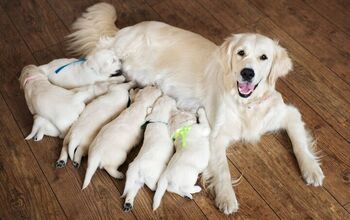Kimola


About Kimola
The Kimola is arguably one of the most family-friendly dogs around. They are naturally happy dogs who is easy to train and eager to please. They love playing with adults and children alike and also do well with other dogs and animals (although they may see smaller ones as prey to chase, so be wary). Due to their small to medium size, they make excellent apartment dwellers so long as they are taken on walks to get their required daily exercise.
Because of their ease of trainability and their kind, lovable nature, they not only make excellent family dogs, but they’re also a great breed for first-time dog owners. Should you forget to go out for a walk, the Kimola will forgive you…as long as you replace it with some rambunctious indoor rough housing! While they do well in colder temperatures due to their thick fur, it is that very same fur which makes it a danger on those hot summer days. When the temperature soar high, always keep an eye on your dog during your walks to make sure they are comfortable.
Kimolas do not require as much exercise as larger dogs, but still need daily walks to keep them happy and healthy.
Designer dog breeds have been growing in popularity for the past twenty years. While some people wrinkle their nose at the term due to the lack of regulation and their “mutt”-like qualities, some designer dog breeds are made entirely on purpose. Many reputable breeders mix one pure-bred dog with another so their puppies will have both parent qualities. Unfortunately, when it comes to Kimolas, we don’t know much about how the designer dog breed came about, but we do know about its parent breeds.
The American Eskimo was first called the American Spitz back in the 1800s. They were bred as a companion dog and throughout the 19th century, they were also commonly used as circus entertainers because he was so easily trained. In the 20th century, their name changed to the American Eskimo dog.
The Lhasa Apso dog, on the other hand, is a rather old breed of dog from Tibet, bred exclusively for nobility. Seen as sacred, the only way to get one was by receiving one as a gift from the Dalai Lama. In 1933, a pair of Lhasa Apsos was given to an American traveller who brought them back home to the United States and eventually developed a kennel.
The Kimola is a mix of a Lhasa Apso and American Eskimo.
The Kimola dog tends to overeat more than other breeds, so be aware of how much dog food and treats you’re giving your dog. This breed will do fine with 1 1/2 to 2 1/2 cups of good-quality dry kibble each day, divided between two meals.
Once they’ve warmed up to the new person in the home, they will no doubt befriend them as well and before you know it, they’ll have a new best friend.
The most efficient way to train Kimola dogs is reward-based training. They are quick learners are not overly stubborn when it comes to simple commands and tricks but do require a firm, patient trainer for the best results.
Kimolas can weigh anywhere between 15 to 40 pounds, depending on how much they take from either parent breed.
These happy-go-lucky dogs are great family pooches because they’re just so full of love to give! Playful and affectionate, they’ll curl on your lap when you’re watching a movie and always be by your side when you’re making dinner for the family. With early socialization, they will gleefully be a watchful eye on the kids when they’re playing in their rooms or even join in the fun by proclaiming their desire for an occasional belly rub. Furthermore, they also do well with other animals (such as a larger dog or similarly-sized cat) with proper socialization.
Because they are easily trained and don’t require much more than food, water, exercise and plenty of love, they are also a wonderful first pet. They’ll love you to death and make it their life’s mission to make you smile no matter how you’re feeling. Their small size makes them excellent apartment pets, provided they are given plenty of outdoor time. To pass the time indoors, be sure to buy them mentally stimulating toys that can entertain them while you’re away at work.
The Kimola, although relatively small in size, are also good watchdogs. They will signal the arrival of a stranger whenever they hear a knock at the door and may continue to bark until they realize the stranger is no threat to them or their beloved family. Once they’ve warmed up to the new person in the home, they will no doubt befriend them as well and before you know it, they’ll have a new best friend.
Common health issues for Kimolas include eye problems, patellar luxation, skin problems, LCP disease, kidney issues, allergies and hip dysplasia. For this reason, always remember to buy your pup from a reputable breeder with health certificates and bring your dog to the veterinarian for regular check-ups.
Kimolas can live 10-15 years.
Kimolas do not require as much exercise as larger, more energized dogs, but still need daily walks to keep them happy and healthy. To keep them in shape, a moderate amount of exercise is necessary. This means walks around your neighborhood, trips to the dog park and plenty of games in between like tug of war and fetch with their favorite tennis ball.
Kimolas will love you unconditionally and make it their life’s mission to make you smile no matter how you’re feeling.
The Kimola is recognized by the American Canine Hybrid Club (ACHCH), Designer Dogs Kennel Club (DDKC), where it is known as the Kimolao, Dog Registry of America (DRA), the United Kennel Club as well as the International Designer Canine Registry (IDCR).
Kimolas have medium-length, dense fur that is silky-smooth after brushing. Speaking of which, these furry companions require daily brushing to keep their coat in tip-top shape and they do shed moderately. Occasionally give your Kimola a bath with dog shampoo (never human!) when his or her fur is dirty, which may range from bi-weekly to monthly depending how long their fur is and how often they run around outside. Fur colors range from grey, cream, white or a combination of the three.
To socialize these little guys, introduce them to new environments, children, adults and animals so they grow up to be a patient, well-rounded dog that will get along with everyone.
Photo credit: dksfjoe/Flickr

More by Diana Faria

























